Your Guide to Conquering Africa’s Highest Peak
Mount Kilimanjaro is not only the tallest mountain in Africa—it’s also one of the most iconic trekking destinations in the world. Towering at 5,895 meters (19,341 feet), this majestic free-standing volcano attracts tens of thousands of adventurers every year. But how hard is it to climb Mount Kilimanjaro, really? Do you need to be an experienced mountaineer? Can it be done as part of your Tanzania safari itinerary?
The short answer? Climbing Kilimanjaro is challenging, but very doable—even for beginners. Let’s break it down.
Quick Overview: Mount Kilimanjaro
-
Location: Northern Tanzania, near the Kenyan border
-
Height: 5,895 meters / 19,341 feet
-
Type: Stratovolcano with three peaks – Kibo, Mawenzi, and Shira
-
Best Time to Climb: January–March & June–October
-
Main Routes: Machame, Marangu, Lemosho, Rongai, Northern Circuit, Umbwe
So, How Difficult Is the Climb?
Climbing Mount Kilimanjaro is not a technical climb. You don’t need ropes or climbing gear, and no prior mountaineering experience is required. But make no mistake—this is a serious high-altitude trek. The primary challenges include:
1. Altitude
The biggest challenge on Kilimanjaro is the altitude. As you ascend, the air gets thinner, which can lead to Altitude Mountain Sickness (AMS). This is why most itineraries are designed for slow, steady acclimatization—it’s not about speed, it’s about your body adjusting to less oxygen.
Pro Tip: Choose a longer route like Lemosho or Northern Circuit for a higher summit success rate due to better acclimatization.
2. Physical Endurance
While you don’t need to be a marathon runner, you’ll need decent fitness. Expect long trekking hours, sometimes 6–8 hours per day, and on summit night—up to 12–14 hours. The terrain changes from rainforest to alpine desert to icy slopes near the top.
Training with long walks, stair climbing, and moderate cardio several weeks before your trek will make a big difference.
3. Weather & Conditions
Mount Kilimanjaro is home to five climate zones—you’ll hike through humid jungle, alpine desert, and frigid glacier zones all in one journey. The temperature can vary from 25°C in the rainforest to -15°C at the summit.
Tip: Invest in layered clothing, waterproof gear, and good hiking boots.
Who Can Climb Kilimanjaro?
People as young as 10 and as old as 80+ have successfully summited Uhuru Peak. If you’re in decent health and can handle moderate hiking, you have a very real chance.
Kilimanjaro is a bucket-list adventure, often added to a longer Africa safari itinerary. Many travelers combine it with a Tanzania safari to Serengeti, Ngorongoro Crater, or Tarangire after their climb to relax and enjoy game viewing.
Choosing the Right Route
Here’s a quick overview of Kilimanjaro’s main routes:
| Route | Duration | Difficulty | Scenery | Success Rate |
|---|---|---|---|---|
| Marangu | 5–6 days | Moderate | Good (huts) | Moderate |
| Machame | 6–7 days | Challenging | Excellent | High |
| Lemosho | 7–8 days | Moderate+ | Outstanding | Very High |
| Rongai | 6–7 days | Moderate | Remote & Dry | Moderate+ |
| Northern Circuit | 9 days | Easier pace | Most scenic | Highest |
| Umbwe | 6 days | Difficult | Steep | Low |
Kilimanjaro Climb vs. Other Treks in Africa
Compared to other African mountain treks—like Mount Kenya or the Rwenzori Mountains—Kilimanjaro is the most accessible. It’s more popular, has better logistics, and offers well-managed support with experienced local guides and porters.
It’s also the only “walk-up” of the Seven Summits, making it an ideal target for adventurous first-time climbers.
Final Thoughts: Is It Worth It?
Absolutely. Climbing Mount Kilimanjaro is physically demanding yet deeply rewarding. You’ll experience the thrill of standing on the “Roof of Africa”, witness dramatic landscapes, and push yourself beyond limits.
Whether you’re a thrill-seeker, a nature lover, or simply someone looking for a meaningful personal challenge, Kilimanjaro offers an unforgettable adventure.
And the best part? You don’t have to do it alone. Many tour operators in Tanzania (like Heart of Serengeti or Travel Booking Guide) offer all-inclusive trekking packages, airport transfers, accommodation before and after the trek, experienced guides, and even safari extensions. This way, you can climb Kilimanjaro and enjoy a classic Tanzania safari all in one trip.
Keywords Recap for Google Search
-
How hard is it to climb Kilimanjaro
-
Mount Kilimanjaro trekking difficulty
-
Climb Kilimanjaro tips
-
Best route to climb Kilimanjaro
-
Kilimanjaro altitude sickness
-
Tanzania adventure travel
-
Africa safari tours
-
Mount Kilimanjaro tour packages
-
Kilimanjaro climb for beginners
-
Safari and Kilimanjaro combo
Ready to Climb?
If you’re dreaming of climbing Kilimanjaro, combining it with a once-in-a-lifetime Africa safari, or need help choosing the right route, feel free to reach out to us. Let’s plan a journey you’ll never forget.



